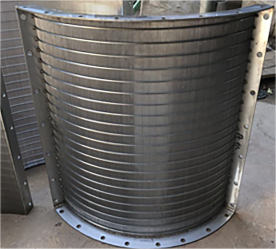The Rise and Resilience of Galvanized Chain An Unbreakable Link in Modern Industry
In the array of materials that constitute the backbone of modern industry and everyday life, galvanized chain stands out as an unsung hero. This remarkable product, primarily made of steel and treated with a layer of zinc, embodies the principles of strength, durability, and corrosion resistance. Its applications span numerous sectors, from construction and manufacturing to transport and agriculture, making it an indispensable resource in contemporary society.
The Process of Galvanization
The creation of galvanized chain begins with the galvanization process, where steel is coated with zinc to protect it from rust and environmental factors. This layer of zinc acts as a sacrificial barrier; even if the zinc coating becomes scratched or damaged, it will corrode before the underlying steel. As a result, galvanized chain can withstand the test of time, especially in harsh outdoor environments where exposure to moisture and other corrosive elements is prevalent.
The two primary methods of galvanization are hot-dip galvanization and electrogalvanization. Hot-dip galvanization involves immersing steel in molten zinc, resulting in a thick and durable coating. Electrogalvanization, on the other hand, applies a thinner layer of zinc through an electrochemical process. Both methods have their unique advantages, allowing manufacturers to choose based on the specific requirements for strength and corrosion resistance.
Applications in Various Industries
The versatility of galvanized chain is unmatched
. In the construction industry, it is widely utilized in the assembly of structures, elevators, and lifting equipment, where strength and reliability are critical. Its ability to support heavy loads makes it ideal for construction sites, where safety is paramount.galvanized chain

In the transport sector, galvanized chains are employed in a variety of applications, including towing and securing trailers. Their resilience against corrosion ensures that they perform optimally, regardless of the weather conditions. Moreover, the agricultural industry relies on galvanized chains for fencing and equipment, safeguarding livestock and maintaining the integrity of farms.
Another burgeoning use of galvanized chain is in marine applications, such as anchor chains and mooring lines. Given the chain's remarkable resistance to rust, it is well-suited for the moist, saline environments of oceans and seas.
Environmental and Economic Benefits
While the benefits of galvanized chain are readily apparent in terms of functionality, it also holds significant environmental and economic advantages. The longevity of galvanized products reduces the need for frequent replacements, thereby conserving resources and minimizing waste. Furthermore, the production of galvanized steel requires less energy compared to stainless steel or alternative materials, making it a more sustainable choice for manufacturers and consumers alike.
In terms of economic impact, the galvanized chain supports local economies through the supply chain. As industries expand, the demand for robust, reliable materials like galvanized chain grows, spurring job creation in manufacturing, distribution, and retail sectors.
Conclusion
In conclusion, galvanized chain is a vital component of modern infrastructure, embodying the spirit of resilience and adaptability. Its strength, combined with its resistance to corrosion, ensures that it remains a popular choice across various sectors. As industries continue to evolve and face new challenges, the galvanized chain will undoubtedly remain a steadfast partner in progress, linking together not just materials but also the fabric of our society. Whether overhead in a bustling construction site or securing a boat at the dock, galvanized chain symbolizes the unbreakable connections that drive our world forward.
-
Why Galvanized Trench Cover Steel Grating Resists Corrosion
NewsJul.10,2025
-
The Versatility and Strength of Stainless Expanded Metal Mesh
NewsJul.10,2025
-
Load Calculations in Steel Grating Platforms
NewsJul.10,2025
-
Keeping Pets and Kids Safe with Chicken Wire Deck Railing
NewsJul.10,2025
-
Hole Diameter and Pitch for Round Perforated Metal Sheets
NewsJul.10,2025
-
Aluminium Diamond Mesh in Modern Architecture
NewsJul.10,2025
Subscribe now!
Stay up to date with the latest on Fry Steeland industry news.

